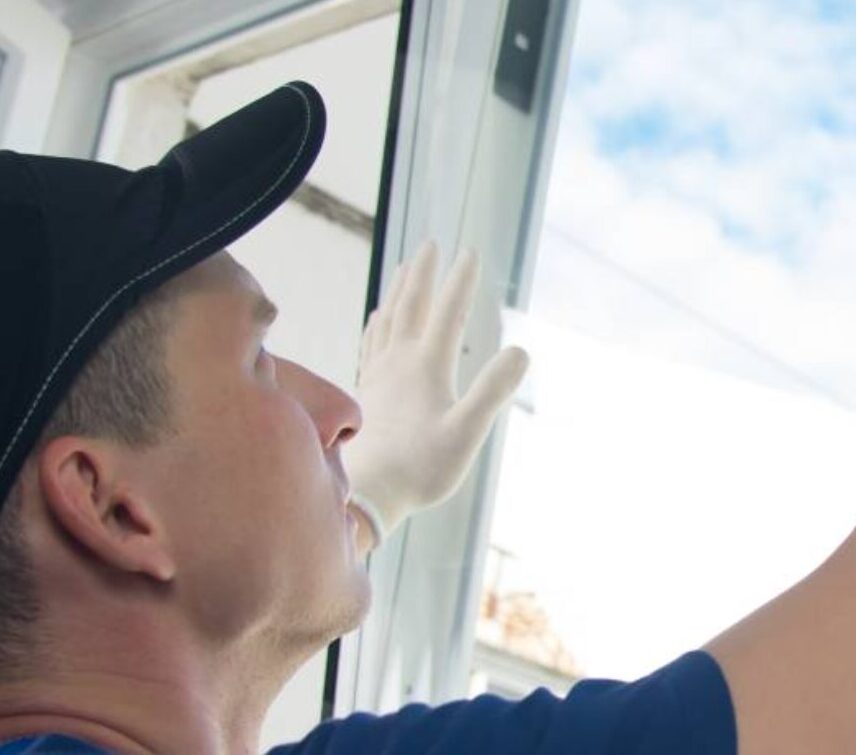Introduction: The Popular Claim That Kitchen Renovations Increase Home Value Is It Always True?
Kitchen renovations are often touted as one of the best home improvements to boost property value. After all, the kitchen is frequently referred to as the “heart of the home”—where families gather, meals are prepared, and memories are made. Given its central role in everyday life, it’s no wonder that a modern, functional kitchen can make a significant impression on potential buyers.
Yet, while many renovation guides and TV shows promise a high return on investment (ROI) from kitchen remodels, the reality is more nuanced. A successful kitchen renovation can certainly increase your home’s value, but it depends on several factors, including the scope of the project, local market conditions, and the quality of execution. Not all kitchen renovations guarantee financial gains, and some could even end up costing more than they add to the home’s value.
In this blog, we take a critical look at why kitchen renovations are often seen as valuable investments and explore the factors that influence their true financial impact in 2025. Through an analysis of current trends, ROI potential, and the risks involved, we aim to provide a balanced perspective that helps homeowners make informed decisions before diving into a kitchen remodel.
Timeline: How Kitchen Renovations Have Shaped Home Values Over Time
The kitchen has evolved dramatically over the past few decades, and so too has the role of kitchen renovations in increasing home value. Let’s look at how the kitchen renovation landscape has changed over time:
Pre-2000s: Focus on Functionality
Before the year 2000, kitchen updates typically revolved around improving functionality. Homeowners would replace old appliances, update countertops, and refresh cabinetry to create more efficient workspaces. Renovations at this time focused on utility and practicality—modernizing kitchens without necessarily creating a space with high-end finishes or design flair. The impact of such renovations on home value was moderate, and the returns on investment were often more related to the improvement in functionality rather than style or aesthetics.
2000s: The Rise of Open Plan Kitchens and Luxury Finishes
The 2000s ushered in a period of significant change in home design, particularly with the increasing popularity of open-plan kitchens. Open-plan kitchens were often integrated into larger living spaces, transforming them into gathering areas for the family. The trend toward luxury finishes, such as granite countertops, stainless steel appliances, and custom cabinetry, also gained traction. Kitchens became more than just functional spaces; they were seen as key features of the home, offering an opportunity to show off personal style. These changes often translated into higher perceived value, especially in more upscale or newly developed homes.
2010s: Technology and Energy Efficiency
By the 2010s, kitchen renovations began to emphasize technology integration and energy-efficient appliances. Smart kitchens, with connected devices like smart refrigerators, touchless faucets, and programmable lighting, became highly sought after by buyers. Energy efficiency also became a priority, with an increasing number of homeowners upgrading to Energy Star-rated appliances and incorporating environmentally friendly materials into their designs. In this period, homebuyers began to place a premium on the long-term savings that energy-efficient kitchens offered, further increasing the value of well-renovated spaces.
2020s: Functionality and Style in the Post-Pandemic Era
The COVID-19 pandemic changed many aspects of home life, including how kitchens are perceived. As homes became multi-functional hubs for work, schooling, and socializing, there was a surge in demand for kitchens that combined functionality with style. Homeowners sought open, flexible spaces with high-quality finishes, durable materials, and features that could support remote working and entertainment. The emphasis on ergonomic layouts, durability, and hybrid cooking spaces (for both traditional cooking and at-home dining experiences) marked this period. Buyers were more inclined to pay a premium for kitchens that made life easier and more enjoyable in this new, home-centric world.
2025 Trends: Sustainability and Smart Tech
In 2025, kitchen renovations are focused on sustainability and smart technology. Eco-conscious buyers are increasingly drawn to kitchens that use sustainable materials, such as bamboo cabinetry, recycled countertops, and energy-efficient appliances. Smart kitchens continue to rise in popularity, with more advanced features like automated cooking, intelligent storage solutions, and fully integrated home systems that allow for greater convenience and energy efficiency. These trends not only increase functionality but also appeal to modern homebuyers who prioritize sustainability and technology in their homes.
Why Kitchen Renovations Add Value to Your Home
A well-executed kitchen renovation can significantly enhance the market value of your home. But what makes kitchen renovations so valuable? Let’s explore the key reasons why kitchen renovations are often seen as a strong investment.
1. Improved Market Appeal
First impressions matter, especially when selling a home. A modern, well-designed kitchen creates a powerful impression on potential buyers and can dramatically improve the appeal of your home. It’s the one room in the house where many buyers tend to focus their attention. A beautiful kitchen can make your home stand out in a crowded market and attract more buyers. This can lead to a quicker sale, which, in turn, may translate to a higher selling price.
2. Return on Investment (ROI)
Kitchen renovations are often regarded as one of the best home improvements in terms of ROI. On average, mid-range kitchen remodels recoup between 70% to 80% of their costs upon resale. This is a solid return, especially when compared to other home improvements like bathrooms or landscaping. According to Remodeling magazine’s Cost vs. Value Report, kitchen remodels typically provide some of the highest ROI percentages of any home improvement project. However, ROI can vary depending on factors like project scope, location, and the specific upgrades made.
3. Enhanced Functionality
A kitchen remodel can do wonders for the functionality of a space. Efficient layouts, improved storage solutions, and updated appliances can make the kitchen more usable and enjoyable. Renovations that improve workflow, such as the kitchen work triangle (the optimal placement of the sink, stove, and refrigerator), make cooking and meal prep easier. Modern storage solutions, like pull-out pantry shelves and deep drawers, help with organization and accessibility. These improvements can make daily life more efficient and comfortable, not only for you as a homeowner but also for potential buyers.
4. Energy and Water Savings
Upgrading to Energy Star-rated appliances, installing low-flow faucets, and adding water-saving dishwashers can lead to significant cost savings in the long run. As buyers become more eco-conscious, energy and water-efficient kitchens are increasingly seen as desirable. These upgrades are not only better for the environment, but they can also reduce utility bills, making the home more attractive to potential buyers. In some markets, the appeal of sustainability in kitchen design can even justify a higher asking price.
5. Customization and Style
In today’s real estate market, buyers expect modern and trendy kitchens. Renovations that incorporate luxury materials like quartz countertops, custom cabinetry, and high-end finishes meet these expectations. Features like smart cabinets that open with a touch, advanced lighting systems, and stylish backsplashes can set your kitchen apart and make your home more attractive to buyers who want a sophisticated, stylish living space. A kitchen that reflects the latest trends while maintaining functionality can be a huge selling point.
6. Increased Resale Value
Experts agree that a thoughtfully renovated kitchen can add between 5% and 10% to your home’s value, depending on the quality of the renovation and the location of the property. While this percentage might seem small, it can represent a significant dollar amount in higher-end properties. The return on investment (ROI) can be even higher in desirable areas where buyers expect high-quality kitchens as a baseline.
Critical Factors That Affect Kitchen Renovation Value
Not all kitchen renovations are created equal, and several factors can influence the financial benefits you reap from your investment. Here are the critical elements that determine how much value a kitchen renovation will add to your home.
1. Scope and Quality of Renovation
Cosmetic updates, such as new countertops, paint, or cabinetry, typically yield better ROI compared to high-end, luxury remodels. While it’s tempting to go all out with custom cabinetry and expensive appliances, these features may not always provide the same return if the market doesn’t demand them. Homeowners should carefully balance their budget to avoid overspending on a kitchen that may be over-designed for the neighborhood.
2. Local Market Conditions
The ROI of a kitchen renovation can vary greatly depending on the local real estate market. If you live in an area where homes are expected to sell for high prices, investing in a luxury kitchen remodel may make sense. However, in more modest neighborhoods, an extravagant remodel might not provide the same return. It’s crucial to understand your local market’s expectations and align your renovation with what buyers in your area are looking for.
3. Design Consistency
A kitchen renovation should complement the overall style of your home. If the kitchen looks out of place—too modern for a traditional house, or too traditional for a contemporary home—it can detract from the home’s overall appeal. Renovating the kitchen should be done with the entire house’s design in mind to create a cohesive, aesthetically pleasing atmosphere that attracts buyers.
4. Hidden Costs and Risks
Renovation costs can quickly spiral out of control if unexpected issues arise during construction. Structural issues, outdated plumbing, and electrical problems can all add significant costs to your renovation project. It’s important to account for these potential surprises and budget accordingly. Working with a qualified contractor and being diligent about inspections can help mitigate some of these risks.
5. Overinvestment
One of the biggest mistakes homeowners make is overinvesting in a kitchen remodel. If the renovation costs far exceed the typical price range of homes in the area, you may not recoup your investment. Overspending on high-end appliances or designer finishes in a neighborhood where homes are modestly priced can result in diminishing returns. Aim for a balance between style and practicality that fits the neighborhood’s price range.
What to Watch Out For: Avoiding Renovation Pitfalls
While kitchen renovations can significantly enhance your home’s value, there are several pitfalls to avoid to ensure you’re getting the most out of your investment.
1. Failure to Plan for ROI
Renovations driven solely by personal taste, without consideration for the broader market appeal, may lead to a low return on investment. It’s crucial to evaluate which aspects of the kitchen are most valued by buyers and focus on improvements that will have the greatest impact on resale value.
2. Neglecting Professional Guidance
DIY renovations or hiring unlicensed contractors can lead to delays, poor craftsmanship, and cost overruns. Working with experienced professionals ensures that your renovation is completed to a high standard, increasing the likelihood of a positive ROI.
3. Ignoring Future Trends
Kitchens with outdated designs or technology may quickly become liabilities. Keeping an eye on future trends such as energy efficiency, smart tech, and sustainable materials can help ensure that your renovation stays relevant and valuable for years to come.
4. Poor Budget Management
Unexpected costs can quickly erode any financial gains from a renovation. Proper budget management and planning for contingencies will ensure that your renovation stays on track and delivers the expected return.
Conclusion:
Kitchen renovations in 2025 continue to be one of the best home improvement investments for homeowners looking to increase their property value. However, the financial returns depend on several factors, including the quality of the renovation, local market conditions, and design choices.
A successful kitchen remodel requires a balance of smart investment, quality design, and strategic planning. By avoiding common pitfalls and making informed decisions, homeowners can transform their kitchens into highly functional, stylish spaces that appeal to potential buyers and enhance the resale value of their homes. Whether you’re renovating for personal satisfaction or to increase market value, understanding the nuances of kitchen renovations is key to maximizing your investment.


